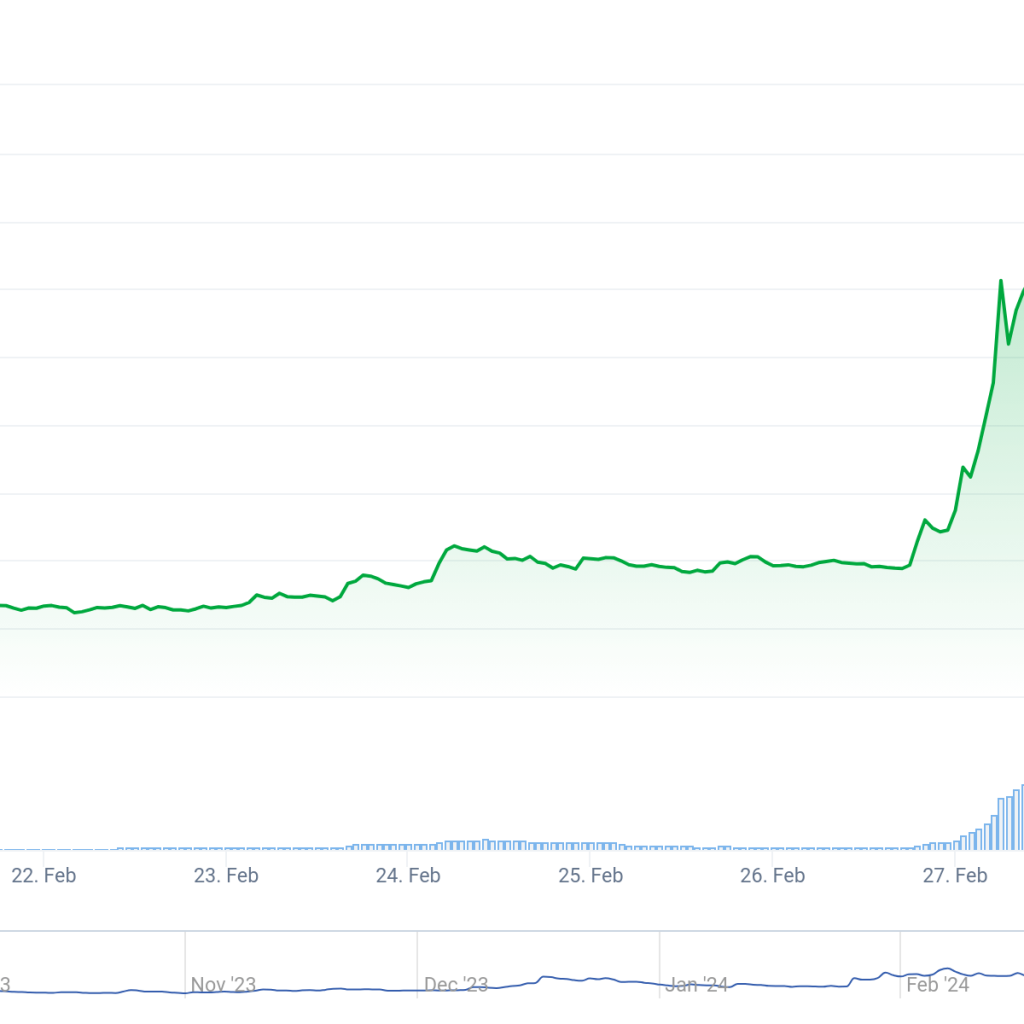
ETH’s correlation with tech stocks, its increasing total value locked and its deflationary token economics all suggest that the path to $2,000 is programmed.
Ether's price (ETH) reached $1,400 on March 10, which proved to be a bargain as the cryptocurrency rallied 27.1% until March 21, at the time of writing. However, the three reasons that supported the price gain, including correlation with tech stocks, its increasing total value locked and its deflationary token economics, all suggest that the path to $2,000 is set in stone.
There are numerous explanations for Ether's 19.4% decline over the past six months. The Shanghai hard fork upgrade was delayed from March to early April and after Shanghai, Ethereum's roadmap includes the "Surge," "Verge," "Purge," and "Splurge" updates. In reality, the longer these intermediate steps to achieve scalability take, the greater the likelihood that competing networks will demonstrate efficacy and possibly establish a competitive advantage.
Another potentially concerning issue on the minds of investors is the real chance of price impact when validators are finally able to unlock their 32 ETH deposits following the completion of the Shappela hard fork. While it is impossible to predict how many of the 16 million ETH currently staked on the Beacon Chain will be sold on the market. There is a compelling argument in favor of the transition to liquid staking platforms, as they can use liquid staking derivatives on other decentralized finance networks without sacrificing their staking yield.
Traders could construct a narrative based on regulatory uncertainty, especially after SEC Chairman Gary Gensler's September 2022 statement that proof-of-stake cryptocurrencies could be subject to securities laws. In February 2023, the SEC reached an agreement compelling the cryptocurrency exchange Kraken to cease offering crypto staking services to U.S.-based clients and the exchange also paid $30 million in disgorgement.
Correlation versus application-focused tech companies
To understand why Ether gained 15% in less than three days after briefly trading below $1,400 on March 10, traders must switch from a price-based analysis to a market capitalization comparison. On March 10, Ethereum’s market cap closed at $175 billion.
Oracle, SAP, and Salesforce are similar to Ethereum in that their software enables users to access shared computing resources and resources. This is in contrast to chipmakers NVidia and TSM, infrastructure providers Microsoft and Oracle, and technology companies Apple and Cisco that heavily rely on equipment.

The market capitalizations of Oracle, Salesforce and SAP are comparable to Ether's at $233 billion, $188 billion, and $149 billion, respectively. Ultimately, centralized and decentralized solutions permit businesses to integrate their proprietary software so that all third parties and relevant departments can consult, process, share, and store data.
Considering the past six months of data, Ether's price has performed similarly to those companies. The drop below $1,400 on March 10 was illogical if the correlation between application-focused tech stocks and the price of Ether remains valid.
ETH’s total value locked sticks at $30 billion
The Total Value Locked (TVL) of the Ethereum network was $24 billion on November 24, 2022, and increased by 30% to $30 billion by March 21, 2023. Therefore, if no other factors influence the price, one could anticipate a 30% price increase during that six-month period. Except that was not the case on March 10, when Ether traded at $1,400, representing a mere 8% increase from six months prior and indicating a disconnect between the value deposited in the network's smart contracts and the ETH price.
This 22% difference between the 30% increase in TVL and the 8% increase in ETH price indicated that Ether's true value should have been near $1,700, a level that was reached three days later on March 13, 2023. This simple model excludes a number of variables that influence supply and demand and the resulting price level, but it does provide an indication based on historical data.
Related: Coinbase submits petition to SEC explaining that staking is not securities
Ether's deflationary mechanism is in full force
On November 10, 2021, the price of Ether was $4,869, a record high for the cryptocurrency. However, a great deal has changed since then, including the burning of 3,016,607 ETH via the EIP-1559 Improvement Proposal. This equates to an additional $5.4 billion in capitalization that would have otherwise been created, thereby adding to the supply side and restraining price appreciation.
Currently, the market leader Bitcoin (BTC), is trading down 59% from its $69,000 all-time high. That does not necessarily mean Ether should reduce the gap versus Bitcoin, but it shows how discounted ETH currently stands at $1,780. The deflationary standard paves the way for Ether’s perception as a scarce digital asset, which is particularly promising during inflationary periods in the global economy.
The views, thoughts and opinions expressed here are the authors’ alone and do not necessarily reflect or represent the views and opinions of Cointelegraph.
This article does not contain investment advice or recommendations. Every investment and trading move involves risk, and readers should conduct their own research when making a decision.





